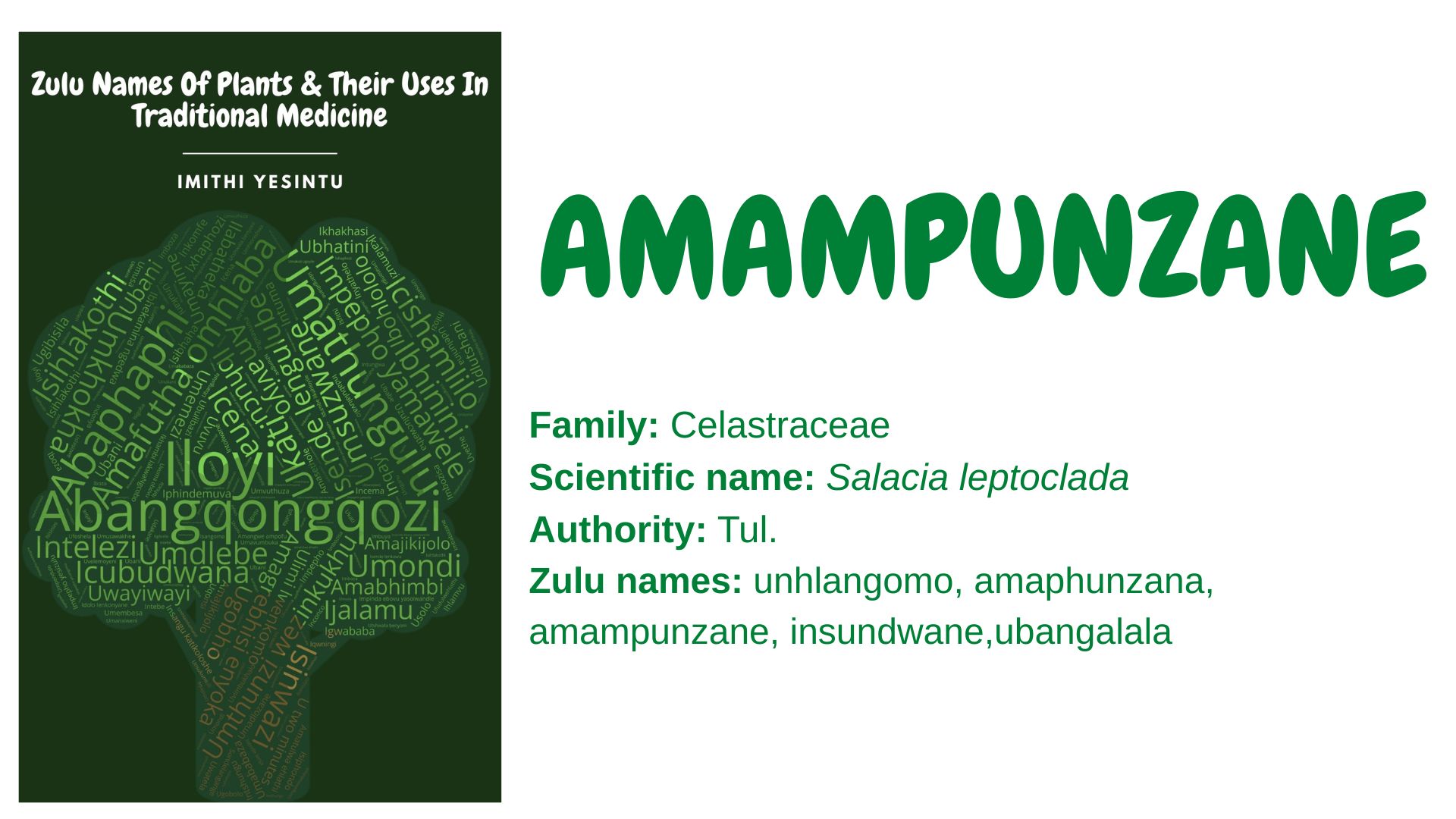Family: Celastraceae
Scientific name: Salacia leptoclada
Authority: Tul.
Synonyms: Salacia baumannii Loes., Salacia wardii I.Verd.
Zulu names: amaphunzana, amampunzane, insundwane, ubangalala, uhlangahomo, unhlangomo, insundwane
Other names: lemon rope, sand lemon-rope (English) lemoentjietou, sand-lemoentjietou (Afrikaans)
Plant description: S. leptoclada is a small tree (or shrub) that grows to between 1 and 4 m in height. It has glossy dark green leaves with a pale underside, yellow to greenish-yellow flowers, and orange to orange-red fruits containing seeds. The shrub is distributed throughout eastern Africa.
Uses:
- The roots are used to treat sexual disorders in men.
- The roots are used as an aphrodisiac.
- The plant is used to treat asthma, diarrhoea, and malaria.
- The plant is for making baskets.
- The young and mature leaves and ripe fruits are eaten by chimpanzee mothers and their infants.
Safety precaution:
Using traditional medicine responsibly can enhance your overall health and well-being. Misuse and abuse can lead to complications. You can inquire about the correct use of traditional medicine from a knowledgeable herbalist and practitioner. You can also visit imithiyesintu.co.za or email: info@imithiyesintu.co.za to learn more about traditional medicine
References and further reading:
- Drewes, S.E., Selepe, M.A., Van Heerden, F.R., Archer, R.H. and Mitchell, D., 2013. Unravelling the names, origins and chemistry of “muthis” used for male sexual disorders in KwaZulu-Natal, South Africa. South African Journal of Botany, 88, pp.310-316.
- Gaugris, J.Y. and Van Rooyen, M.W., 2007. The structure and harvesting potential of the sand forest in Tshanini Game Reserve, South Africa. South African Journal of Botany, 73(4), pp.611-622.
- Loffler, L. and Loffler, P., 2005. Swaziland Tree Atlas.
- Leshwedi, M., 2012. The Anti-Inflammatory Properties of Salacia Leptoclada and Warburgia Salutaris: Their Possible Role as Therapeutic Agents in Crystalline Silica-Induced Cellular Injury. University of Johannesburg (South Africa).
- Ruphin, F.P., Baholy, R., Emmanue, A., Amelie, R., Martin, M.T. and Koto-te-Nyiwa, N., 2013. Antiplasmodial, cytotoxic activities and characterization of a new naturally occurring quinone methide pentacyclic triterpenoid derivative isolated from Salacia leptoclada Tul.(Celastraceae) originated from Madagascar. Asian Pacific Journal of Tropical Biomedicine, 3(10), pp.780-784.
- Tarnaud, L., 2004. Ontogeny of feeding behavior of Eulemur fulvus in the dry forest of Mayotte. International Journal of Primatology, 25(4), pp.803.
You Can Order Your Copy Of The Book By Emailing: info@imithiyesintu.co.za
Feel Free To Add Other Uses Of This Plant In The Comment Section Below:

